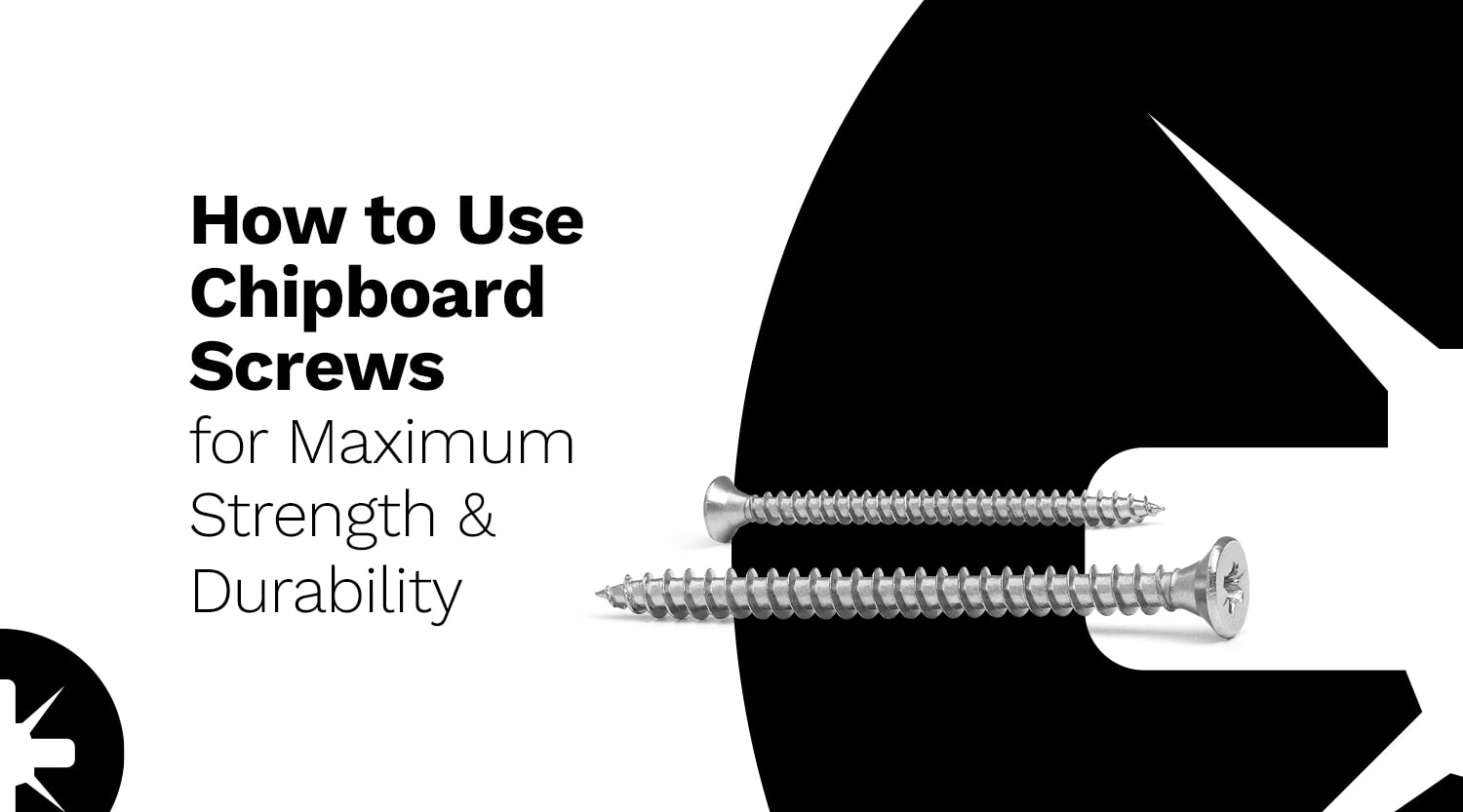


Did you know that the development of MDF (Medium Density Fiberboard) and particleboard in the 20th century revolutionized the furniture and construction industries? As these engineered woods gained popularity for their affordability and versatility, knowing when and how to use Chipboard Screws became essential, as they were specifically designed to ensure a secure connection without damaging the material, which is denser and less forgiving than natural wood.
This innovation in fastening technology contributed to the rapid growth of flat-pack furniture and the mass production of wooden goods—a trend that continues today. When you are working with composite materials like chipboard, particle board or MDF, choosing the right screw is crucial. SS Chipboard Screws are specifically designed to provide maximum strength and durability in these materials.
Unlike regular wood screws, these fasteners are tailored to handle the unique properties of engineered wood. If you’re looking to ensure a secure, lasting hold in your next project, Chipboard Screws should be your go-to choice. In this guide, we’ll cover everything you need to know about using Chipboard Screws for the best results.
Chipboard Screws are self-tapping screws made specifically for use with engineered wood like chipboard, MDF, and particleboard. Their unique design allows them to create their own threads as they are driven into the material, ensuring a secure and tight hold. These screws feature sharp, coarse threads that help grip softer materials like chipboard without causing the material to split.
What sets Chipboard Screws apart from regular wood screws is their fully threaded design, which runs from the tip to the head. This ensures maximum gripping power, especially in composite materials, providing a reliable, long-lasting hold.
If you’re wondering about the difference between Wood Screws and Chipboard Screws, check out our detailed comparison in our previous blog to understand how these screws serve different purposes and which one is best for your project.
Using the right type of screw is essential for creating strong and durable connections in woodworking and DIY projects. Here are the reasons why Chipboard Screws are preferred for composite materials:
Chipboard Screws are highly versatile and can be used in a wide range of applications. Here are some of the most common use cases:
While both wood screws and Chipboard Screws are used for fastening wood, they differ significantly in design and application. Here’s how:
Now that you understand the advantages of Chipboard Screws, let’s dive into how to use them for the best results:
Choosing the right Chipboard Screw is crucial to ensure maximum strength and durability for your project. Here’s what to consider:
In summary, Chipboard Screws are essential for anyone working with composite materials like MDF, chipboard, and particleboard. They provide the strength, durability, and ease of use required for a variety of applications, from furniture assembly to outdoor projects. By understanding their unique features and using them correctly, you can ensure a long-lasting, secure hold for your materials.
At LP Screw, we are proud to be recognized as one of the leading SS Screw Manufacturers in India, committed to offering the best-quality fasteners for every project. Whether you are an artisan, carpenter, woodworker, or DIY enthusiast, we continuously share insightful blogs and tips to help you with your work. Be sure to check out the blog section on our website for more valuable content.
To never miss an update from us, make sure to follow us on our Facebook and Instagram channels. Stay connected, stay informed, and let us help you with all your fastening needs!
1. Can I use Chipboard Screws for metal applications?
No, Chipboard Screws are designed for use with composite materials like MDF and chipboard. For metal applications, use appropriate fasteners like Machine Screw or Hex Bolts.
2. Why should I choose SS Chipboard Screw?
SS Chipboard Screw are ideal for outdoor or moisture-prone environments due to their excellent corrosion resistance, ensuring your projects last longer.
3. How do I select the right Chipboard Screw for my project?
Choose the appropriate length and gauge based on the thickness of the material and the load-bearing capacity required. For outdoor use, opt for corrosion-resistant screws like SS chipboard screws.